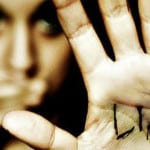If you haven’t already watched my interview with world renowned climate scientist John L. Casey, please take 20 minutes out of your day to do so. His insight into sun cycles and their effect on the earth proves that we are headed into a deep cold era starting now and lasting for several decades. I have not seen much discussion of this topic within the preparedness communities, and I feel strongly that it is our role to get the word out about it. This will dramatically affect the yearly growing season which will diminish our food supplies like the last time this happened 200 years ago (year without a summer / dalton minimum)
With the dark winters approaching, and several more “polar vortexes” to come, we need some practical cold weather guidance for sheltering in place if a loss of power occurs for extended periods of time.
- Prevent Frozen Pipes – This is probably the most important tip as I haven’t seen many preppers do this: Have you thought about what would happen if you power would go out for a couple of days if a new polar vortex blizzard hit? Shut off your main water line, open up all your faucets around your house, and flush your toilets. Additionally, buy yourself several jugs of PINK RV Antifreeze (Walmart or other box stores). Pour this into your sinks and toilets to fill up your traps. You may have just saved yourself several thousands of dollars in pipe damages to your water lines and sink/toilet traps by doing this cheap preparedness step.
- Have an indoor heat source – The majority of Americans have either central gas or electric furnaces. In either situation, if the grid goes down, you have no means to push the heated air throughout your home. You need to identify an alternative source:
- Gas fireplace
- Wood fireplace, wood stove, pellet stove, etc. If you don’t already own one of these and want to install, recognize that you’ll use MUCH more wood/fuel than you would probably think.
- Kerosene Heater – Fairly safe indoors, but should have adequate ventilation to ensure there is no carbon monoxide build up.
- Mr. Heater Propane heater – Very safe indoors. It is 99.9% efficient and therefore little carbon monoxide is emitted. It is also relatively safe for fire hazards so long as you are safe around carpets and other combustible materials.
- If you’re shit out of luck and have none of the former, even small candles can help increase a room’s temperature.
- SAFETY TIPS
- Always keep fire blankets and extinguishers on hand in case of fire.
- Ensure batteries are charged in your smoke detectors.
- Purchase battery powered carbon monoxide detectors.
- Isolate within a room – Isolate you and your family in a small room within the home (or fixed heat source). It should be small with regards to ceiling height as well as square footage. Stock up on your warm weather clothing and bedding material.
- Insulate Windows – There’s a whole variety of window insulation tips out there. Personally, the most practical and easiest one I’ve tried is bubble wrap over your windows. I did notice a marked improvement over not having them, and its 1,000x easier than trying to put plastic up over your entire window. If you have drafts though, this will not help at all. Unfortunately, you may need to go the route of the plastic wrap.
Again, these are only tips to protect your home and yourself from the cold. If the power goes out and it’s freezing cold inside yourself, you may have a whole host of other issues to deal with like medical needs, food and water stores, etc.
Stay safe this winter!
Mike



